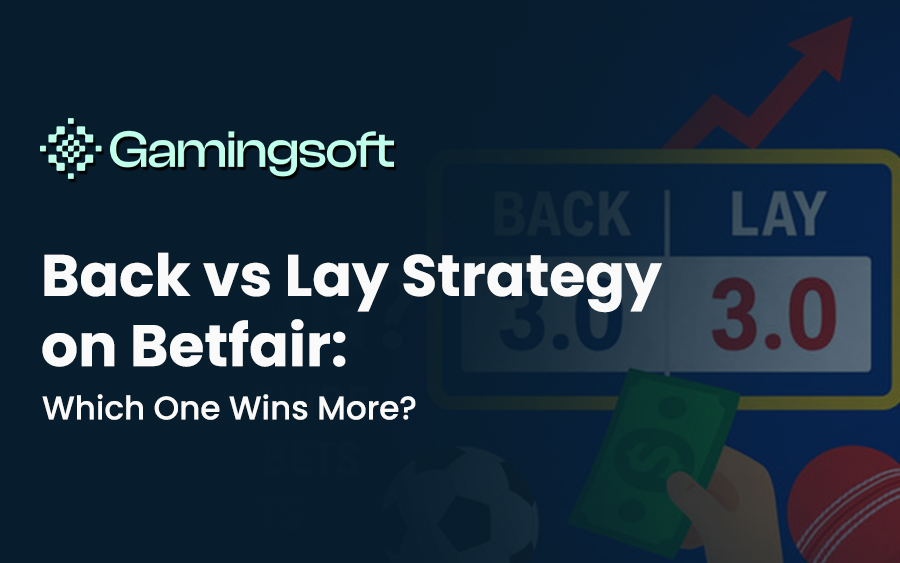When it comes to betting exchanges like Betfair, everything revolves around two simple actions: backing and laying. Back betting means you’re betting for something to happen. Lay betting means you’re betting against it. Both are powerful, and both can make money — but they work very differently.
In this article, we’ll break down what each strategy means, show real examples, and explore which one offers better long-term potential for smart bettors. Let’s find out: between back and lay, which one really wins more?

What Is Betfair and How It Works
Betfair is the world’s largest betting exchange, connecting millions of users who bet against each other rather than against a bookmaker. The platform doesn’t set odds — it simply matches people with opposing views.
Example:
- You back Manchester City to win.
- Someone else lays Manchester City because they think City won’t win.
- Betfair matches your bets and charges a small commission on the winner’s profit (usually 2–5%).
This peer-to-peer model creates a marketplace of opinions — and opens up strategies that go far beyond traditional betting.
What Is a Back Bet?
A back bet is the traditional kind of wager: you’re betting that something will happen.
Example:
You back Liverpool to beat Chelsea at odds of 2.50 with a $10 stake.
- If Liverpool win → you win $15 profit (plus your $10 back).
- If Liverpool lose or draw → you lose $10.
That’s it. Simple and familiar — this is what most bettors start with.
Advantages of Back Bets
- Easy to understand and low barrier to entry.
- Limited risk (you only lose your stake).
- Ideal for beginners and casual players.
Disadvantages
- You rely heavily on finding value odds.
- Limited flexibility once the bet is placed.
- Market movement doesn’t help you unless your team wins.
What Is a Lay Bet?
A lay bet means you’re betting against something happening.
When you lay, you act like the bookmaker.
Example:
You lay Liverpool at 2.50 for a $10 stake.
- If Liverpool lose or draw → you win $10 (minus small commission).
- If Liverpool win → you pay out $15 (your liability).
Advantages of Lay Bets
- You can profit when favorites fail — even if they just draw.
- Easier to find “overpriced” odds to exploit.
- Works well in markets with unpredictable outcomes (like football or horse racing).
Disadvantages
- You take on liability, which can exceed your initial stake.
- Requires stronger understanding of risk management.
- Less intuitive for beginners.
Back vs Lay: Key Differences at a Glance
| Aspect | Back Bet | Lay Bet |
| What You Bet On | Event will happen | Event won’t happen |
| Role | Bettor | Bookmaker |
| Potential Profit | (Odds – 1) × Stake | Stake |
| Potential Loss | Stake | (Odds – 1) × Stake |
| Risk Level | Lower | Higher |
| Market Conditions | Works in trending or strong favorite markets | Works in volatile or unpredictable markets |
| Ideal For | Beginners, recreational bettors | Experienced traders, strategic players |
Back Strategy: When It Wins More
The back strategy tends to perform best in situations where:
- You identify undervalued teams (odds higher than they should be).
- You follow form and momentum rather than emotion.
- You catch early odds before the market adjusts.
Example:
You back Manchester United at 2.80 early in the week.
By matchday, the odds shorten to 2.40 due to team news or betting activity.
Even before kickoff, you could lay United at 2.40 and secure a small profit without waiting for the result.
This approach — backing early, laying later — is one of the most common back-to-lay strategies used by smart traders.
Lay Strategy: When It Wins More
Lay betting shines when the market overestimates certain teams or outcomes.
Example:
A popular favorite like Liverpool is priced at 1.50 to win, but you believe they’re not in top form.
You lay Liverpool for $20.
If the match ends in a draw or loss → you win $20.
If they win → you lose $10.
Lay betting is especially effective when:
- You identify overhyped favorites.
- You use statistical data (expected goals, injury reports, fatigue, etc.).
- You trade in-play, laying when odds are low and backing later when odds rise.
Professional traders often rely on laying strategies because they don’t need a specific result — just for something not to happen.
Back-to-Lay and Lay-to-Back
Instead of seeing back and lay as rivals, many traders combine them.
Back-to-Lay Example:
- Back a team before the match at high odds (e.g., 3.50).
- When they score and odds drop to 2.00, lay the same team.
- Lock in profit on both sides.
Lay-to-Back Example:
- Lay a favorite at 1.40 before kickoff.
- If they concede early and odds rise to 2.50, back them again.
- Profit from the price movement, regardless of the outcome.
These techniques transform betting into market trading, emphasizing timing, analysis, and emotion control — skills that win consistently over luck.
Profitability Comparison
Here’s the truth: neither back nor lay always wins more.
It depends entirely on:
- Market type
- Price movement
- Timing
- Data and discipline
However, let’s break down tendencies seen across Betfair users and long-term strategies.
Back Betting Wins More Often…
- In markets with predictable outcomes (e.g., strong football favorites).
- When bettors specialize in niche leagues with low bookmaker efficiency.
- For casual users aiming for steady, small returns.
Lay Betting Wins Bigger Over Time…
- When used with strong data analysis and risk control.
- When identifying overvalued favorites or emotional markets.
- When combined with in-play or multi-market trading.
Statistically, lay bettors often achieve higher ROI — but only if they manage their liability carefully. For casual users, back betting remains safer and easier to sustain.
Risk Management: The Real Decider
Whichever strategy you choose, success comes down to how well you manage risk.
Tips for Back Bettors
- Look for value, not emotion.
- Avoid short odds with little upside.
- Use data tools to find inefficiencies.
Tips for Lay Bettors
- Always calculate liability before placing a lay.
- Avoid laying long shots — the losses can be huge.
- Hedge your exposure with in-play backs if odds move sharply.
Good traders treat every bet like a financial transaction — aiming for consistent, compounding gains.
From a B2B Perspective: Why It Matters
For iGaming operators and technology providers, understanding back and lay dynamics isn’t just about player education — it’s product innovation.
- Dynamic pricing models: Exchanges rely on real-time liquidity, not fixed margins.
- User engagement: Lay betting attracts data-driven, active users who stay longer.
- AI integration: Predictive algorithms can auto-adjust odds and suggest smart hedging positions.
Companies building white-label or API-integrated exchange systems can use back/lay analytics to enhance trading dashboards and player retention.
Conclusion
The debate of back vs lay isn’t about which is “better.” It’s about which suits your style, discipline, and risk appetite.
- Back bettors think like fans — confident, intuitive, and optimistic.
- Lay bettors think like traders — analytical, cautious, and strategic.
The smartest players use both, adapting to the market and locking in profits regardless of outcomes.
On Betfair and other exchanges, the goal isn’t luck — it’s liquidity, logic, and learning.
So whether you back, lay, or mix both, remember: in the betting exchange world, winning means thinking one step ahead of the crowd.
About Gamingsoft
Gamingsoft is a leading provider of online casino solutions, offering a comprehensive suite of services, including a white-label solution, API integration, payment solutions, game development, and more, to iGaming operators worldwide. With over years of experience, Gamingsoft has earned a reputation for delivering innovative and reliable solutions, helping clients succeed in the competitive iGaming industry.





